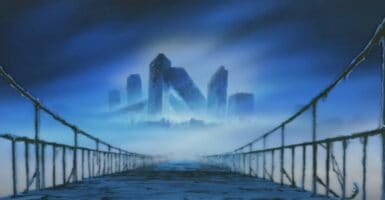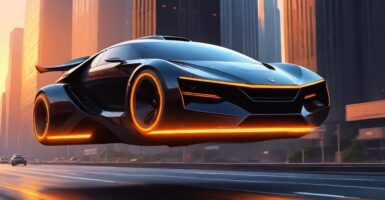Bacteria-Resistant, Hydrogen-Powered Leaf Could Soon Power The World
This article is more than 2 years old
 If you think about all the problems that plague the world at large, especially impoverished countries that don’t have many of the things first-world citizens take for granted, your top five is definitely going to include “Christmas trees don’t power their own decorations.” I mean, you’re spending money on presents already. Who needs to shell out extra dough for a shit-ton of little light bulbs? While this scourge of our holiday season almost certainly isn’t on the mind of biochemist Daniel Nocera, PhD, it will soon be possible thanks to his revolutionary invention.
If you think about all the problems that plague the world at large, especially impoverished countries that don’t have many of the things first-world citizens take for granted, your top five is definitely going to include “Christmas trees don’t power their own decorations.” I mean, you’re spending money on presents already. Who needs to shell out extra dough for a shit-ton of little light bulbs? While this scourge of our holiday season almost certainly isn’t on the mind of biochemist Daniel Nocera, PhD, it will soon be possible thanks to his revolutionary invention.
Nocera, a former MIT professor who entered Harvard’s Chemistry and Chemical Biology department last year, saw his decades-long efforts in creating sustainable power come to fruition in an “artificial leaf” that he first revealed in 2011. He recently unveiled a self-healing version that will soon see commercial release through Nocera’s company, Sun Catalytix. Consider those billboards that converted humidity into drinking water, and the impact they could have on countries where clean water isn’t freely available. Nocera’s leaf will give those areas power. Electrical power! Sure, it doesn’t sound that exciting to you because you’re reading this on an electrical device.
In basic terms, the leaf — actually just silicon covered in catalysts — works like so: put it in water, and it separates the hydrogen from the oxygen and stores it in fuel cells. How well does it work? Less than a quart of water could provide 100 watts of electricity, 24 hours a day. The only setback is a need for clean water, as the bacteria would quickly build up otherwise. At American Chemical Society meeting in New Orleans, Nocera discussed his amazing innovation:
Surprisingly, some of the catalysts we’ve developed for use in the artificial leaf device actually heal themselves,. They are a kind of ‘living catalyst.’ This is an important innovation that eases one of the concerns about initial use of the leaf in developing countries and other remote areas.
Self-healing enables the artificial leaf to run on the impure, bacteria-contaminated water found in nature. We figured out a way to tweak the conditions so that part of the catalyst falls apart, denying bacteria the smooth surface needed to form a biofilm. Then the catalyst can heal and re-assemble.
Billions of people live in areas without a steady power supply, and a good chunk of that population doesn’t even have clean water. This leaf is cheaper than almost any other kind of alternative power out there, and is seemingly just as powerful, if not more so, especially when used in conjunction with one another. It might even make amazing inventions like these solar suitcases irrelevant in the future. But never the dirt-digesting robot.











